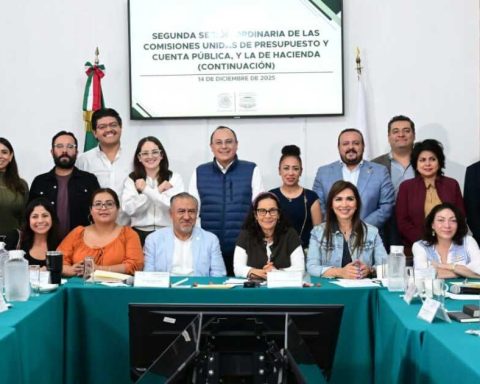The growing interest in production of tilapia in the country, the demand for its consumptionthe profits that this activity promises and its promotion are some of the factors that explain the expansion of its cultivation in the last four years.
The production national of tilapia is around 36,683 quintals so far this year -3,668.3 tons-, 6% more than in 2023 and 48.7% more than the 26,676 quintals -2,667.6 tons- recorded in 2020, according to statistics from the Ministry of Agriculture.
“There is great interest, there is great market and there is a great consumption. Tilapia, in some way, is replacing sea fishing, especially in many of the restaurants,” highlighted the general administrator of the Bank Agricultural (Bagricola), Fernando Durán, to Free Diary.
He Bank Agricultural finances tilapia projects valued at 700 million pesos. “There is a lot of interest, much more than we can satisfy,” he expressed, after adding that it allows us to generate good income and produce significant quantities.
The president of the Association Dominican Aquaculture (Adoa), Carlos Mena.
Although he questions the growth reported by the Government in the last four years because he considers that more uprisings are needed To frame the reality of the sector in data, he does recognize that there is “a boom, word of mouth” that tilapia is very profitable.
income and costs to produce
The president of Adoa indicated that if a producer wants to start in the production of tilapia level business –which requires investment in property, ponds, filters, food, fry, licenses and other inputs to operate – would need a minimum of 8 million pesos to start, a capital that would be recovered after six or seven months, when the first harvest is obtained.
This panorama is different for a familywhich can develop a production for their survival.
“If you have a pond that is going to involve the familyit is something very minimal, and it implies a plus for your budget because you are not going to employ anyone, you are only going to spend on food, and filtering is not expensive“, held.
He assured that, in general, the aquaculture It is one of the most profitable and sustained within agricultural activity as long as it is managed correctly, since it requires more knowledge to undertake it and requires up to 30% more dedication than other animals, such as dairy cattle.
Although 60% of the cost of production depends on the feedingto get a kilo of meat of an aquaculture product it is necessary to invest between 1 and 1.5 kilos of food, a lower amount with other types of meat such as pork, which requires an investment of 3 kilos of food for each kilo of meatpointed out the president of Adoa.
He pointed out, as an example, that the aquaculture allows reuse water and recycle it as fertilizer to irrigate rice farms.
“That’s why, perhaps (the costs of production) don’t have an answer as such, because you may have the same costs fixed within a small project than a larger one. You can have two employees for a two-pond project, but those same employees are the ones you are going to use for ten ponds,” Mena observed.
Licenses
The Dominican Council of Fisheries and Aquaculture (Codopesca) has granted around 600 licenses of operation of aquaculture projects in the country, three times more than in 2020, due to the execution of an “aggressive” plan to organize and register these initiatives.
Of all these licensesbetween 95% and 98% have been granted for the production of tilapia, a crop that has been encouraged among producers through donations of between 1.5 million and 2 million fingerlings per year, stated its executive director, Carlos Then, who said the institution offers support in regulation and technical assistance.
More planning
Mena estimates that, in the Dominican Republic, there is a production of 3,900 tons of products aquaculture on average, with tilapia as the main cultured species. In fact, this fish represents 90% of the production of the 300 formal aquaculturists that Adoa groups together.
This could be even more so if efforts were made to reduce the producers informalthey are given advice and if there is a strategic plan, from the Government, to support both the productionsuch as foreign sales.
“We should be producing more than 10,000 metric tons of fish a year, but we are not even close,” he said.
The strengthening of tilapia production in the country depends on a genetic improvement of the fish that allows the generation of a higher quality protein, and increasing the technology in the projects and transitioning towards more advanced farming systems. “One challenge is to modernize the projects, use geomembrane so that the meat does not have the earthy taste, which people are afraid of,” stressed the executive director of Codopesca. Then he also highlights that the dependence of producers on State initiatives must be reduced so that they can be competitive and self-sufficient. “You have to produce, but also have the sales capacity. You cannot depend only on the State or institutions,” he stressed. Tilapia producers also need to have the support of cooperatives that add value to the fish and introduce it to new markets. , as well as to obtain necessary equipment, such as cold rooms.

















